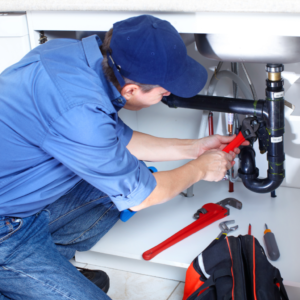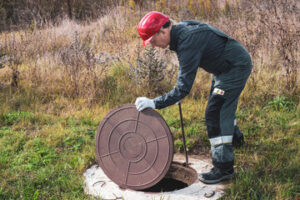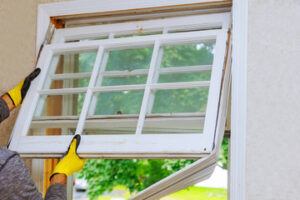A person who is arrested and booked will usually undergo a bail hearing. A judge will examine the details of the alleged crime, the person’s criminal history and their flight risk and danger to the community.

The judge will then set a certain amount of money that the defendant or someone on their behalf must pay to secure their release. They will also consider whether to require collateral. Contact A American Bail Bonds for professional help.
After an arrest, a person can either remain in jail until their case is resolved in court or pay the bail amount and be released from custody. The judge will set the bail amount during an arraignment after reviewing information regarding the alleged crime, the criminal history of the accused, their flight risk, and other factors. If they believe the accused is a danger to society, they will likely keep them in jail and deny them the opportunity for bail.
Those who are unable to immediately pay the court-set bail amount can hire a bail bond company to do so on their behalf. A bail bondsman will charge a fee, or premium, for their services and may ask the defendant to put up collateral, such as a house, car, or other property, in addition to the premium. The bond agent will then work with the courts to secure the release of the accused.
The bail bond company is essentially acting as the intermediary between the court and the defendant, and they will typically get their money back from the court after the case is resolved. However, if the defendant fails to follow the conditions set by the judge and does not appear for any required trials or court dates, they will forfeit their entire bail bond sum and the bondsman will be responsible for covering the full amount.
A person can also post their own cash bail directly with the court at the time of arraignment. However, this option is typically only available to those who are able to provide a large enough amount to cover the bail amount set by the judge.
Bail is an essential part of the criminal justice system. It allows those who have been arrested to temporarily leave custody while they wait for their trial date and allow them to focus on building a strong defense, and it gives them the chance to take care of personal matters that need to be addressed before their appearance in court. The court will only release those who have been granted bail after they determine that they are not a threat to the public or an actual flight risk, and there is a good reason for this policy.
How Do Bail Bonds Work?
A judge sets bail based on the severity of the alleged crime and other factors such as the defendant’s history, criminal record, and the risk of flight. Bail is usually much higher for more serious crimes. If the defendant can’t afford to pay the full amount of the bond, a bail bondsman will post it on their behalf for a fee, typically 10% or less of the total bond. The bail bondsman will also require some type of collateral, such as a house, car, or other asset. This is to cover the cost of the bond in the event the defendant misses their court appearance or fails to comply with any other requirements outlined in their contract with the bail bondsman.
Once the bond is posted, the jail will release the defendant, provided they meet all other court stipulations and attend all scheduled hearings. Once the case is resolved, the bail bondsman will return any collateral to the indemnitor (often the defendant’s friend or family member), although they will not return the 10% premium paid at the beginning of the process.
In order to make sure that the defendant will show up for court dates, a bail bondsman may place a lien on the person’s property. This makes it very difficult to sell or transfer ownership of the property. In addition, the bail bondsman may call the person regularly and check in with them to ensure that they are not missing any court dates.
The most important thing to keep in mind is that the bail bond company is taking on a lot of risk in the hope that the person will appear for all of their court dates. Because of this, the bail bondsman will charge a non-refundable fee for their service. In some cases, this can be as high as 20% of the bail amount.
In other cases, the bail bond company will be willing to take on more risk and reduce their fees. This is called a cosigning or guarantee agreement. In this case, the bail bondsman will agree to put up some form of security (i.e., the assets of the person who hired them) in the event that they fail to show up for their court appearances.
How Much Does a Bail Bond Cost?
The cost of a bail bond depends on the severity of the crime and other factors. Judges have discretion to set a bail amount on a case-by-case basis, and the cost can range from a few thousand dollars for a minor misdemeanor to hundreds of thousands for a serious felony. The court will consider the alleged offense, the individual’s criminal history, and their risk of flight or reoffending while on bail.
A person who wants to post their own cash for their own release from jail can pay the full cash value at a police department where they are arrested, at a county courthouse, or by contacting a licensed Bondsman. A bondsman will require a fee (usually 10% or less of the total bail) in exchange for posting the bail money and securing an individual’s release from jail. This fee is non-refundable. The bondsman will also require some form of collateral to ensure that they are repaid for their services should the defendant fail to return for his or her scheduled court appearances.
Some states allow private companies to offer a bail guarantee, but the process is typically more complicated. These companies must register with the state, and they may be required to provide a surety or insurance company with information about their business practices and background. These companies must also obtain the signature of a loved one willing to be responsible for paying the bail bond in case the defendant fails to appear for all of his or her scheduled court appearances.
Some states have laws that limit how much a bondsman can charge for their services, and others only allow them to charge the amounts registered with the state. It’s important to shop around for the best possible rates and payment options. Many bonding agents are flexible and will work with you to find a solution that meets your needs.
Are There Alternatives to Bail Bonds?
There are a few alternatives to bail bonds that can help people get out of jail quickly. However, these options may not be available for all cases. These alternatives include unsecured appearance bonds, secured bonds and partially secured surety bonds. The purpose of these alternatives is to ensure that the defendant will appear in court for all proceedings. The bonds are backed by the responsible party (friend or family member) who agrees to pay the entire bail amount if the defendant does not show up for court. If the defendant does appear for all proceedings, the deposit or collateral is returned to the responsible party.
The primary reason that many people fail to appear for their court dates is because they are too busy to make it. They may have jobs, children, bills to pay or other obligations. They also may have extenuating circumstances such as a lack of transportation or the inability to take time off from work. When a judge sets bail, they are supposed to take into account whether the bail amount will pose an undue hardship on the person and their loved ones. However, this requirement is often ignored.
A new report by the Vera Institute of Justice examines several alternatives to cash bail, including unsecured and partially secured bonds. The authors of the report found that these alternatives were more effective at reducing failure to appear rates than cash bail. In addition, they were less costly than traditional bail.
Unlike bail bonds, these alternative forms of release did not limit the number of low-level offenses for which they were granted. They were awarded on cases ranging from drug possession and larceny to assault and criminal contempt of court. In addition, the failure to appear rate for those released on these alternative forms of release was just 8 percent.
While some experts argue that the use of these alternatives to bail is not effective, they are a good first step towards eliminating financial barriers to court attendance. If implemented properly, these alternatives can provide a safe, affordable alternative to jail while providing a more equitable system of pretrial release than the current one that focuses on wealth and not risk.








